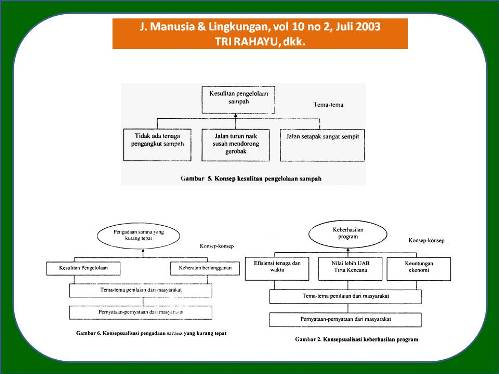
EVALUASI PROGRAM PENATAAN DAN REHABILITASI PERMUKIMAN KUMUH STUDI KASUS KAWASAN BANTARAN SUNGAI CODE BAGIAN UTARA, YOGYAKARTA (The Evaluation of Slum Area Rehabilitation and Improvement Programs Case Study in Nothern Banks Area of Rivers Code Yogyakarta)
Tri Rahayu(1*), Sudaryono Sudaryono(2), M. Baiquni(3)
(1) Dinas Kimpraswil Propinsi Bengkulu
(2) Fakultus Teknik Jurusan Teknik Arsitektur Universitas Gadjah Mada, Yogyakarta
(3) Fakultas Geografi Universitas Gadjah Mada, Yogyakarta
(*) Corresponding Author
Abstract
ABSTRAK
Meskipun Pemerintah telah rnelaksanakan penanganan daerah kumuh untuk waktu yang cukup lama, infrastruktur yang dibangun telah diabaikan den ditinggalkan. Hal ini terkait dengan kebijakan pemerintah pada waktu yang lalu dinrana banyak program yang dilaksanakan tanpa melibatkan masyarakat. Belajar dari kegagalan ini, pemerintah mengubah pola pengembangan menuju aktivitas pemberdayaan masyarakat yang disebut Konsep TRIDAYA. Konsep ini memiliki 3 komponen pemberdayaan: (1) pemberdayaan komunitas sosial, (2) pemanfaatan lingkungan fisik, dan (3) peningkatan usaha kecil. Penelitian ini bertujuan untuk mengevaluasi pencapaian pengembangan infrastruktur di daerah Sungai Code bagian utara dalam program penataan dan rehabilitasi permukiman kumuh. Penelitian ini menggunakan metode deskriptif-eksploratif, dengan melakukan interview tidak terstruktur dengan masyarakat yang terlibat dalam program. Hasilnya di analisis dengan metode deskriptif kualitatif. Program tersebut merniliki 3 komponen: (1) penyediaan air, (2) jalan setapak, (3) limbah padat. Dari setiap komponen program dapat dikembangkan 3 tema yaitu masalah sebelum adanya program, benefit dan dampak dari program, serta tanggapan terhadap program. Tema-tema ini dikelompokkan ke dalam beberapa konsep. Terdapat 2 katagori: 2 program berisikan penyediaan air, jalan setapak dapat dicapai, tetapi program limbah padat tidak dapat dikembangkan lagi.
ABSTRACT
Even though the government has been taking care of slum area improvement for a long time, the infrastructures that have been built have been neglected and abandoned. It is related with the government policy in the past that conceived many programs without involving the community learning from this failure, the government turned the development pattern into community empowering activities called Tridaya concept. It has three empowering components: (1) empowering social community, (2) taking advantage of physical environment, and (3) improving small business. The research was aimed to evaluate the achievement of the infrastructure development in the northern banks area of Code River under the slum area rehabilitation and improvement programs. The research used descriptive explorative methods, by means of exploration and unstructured interviewing with the community involved in the programs. Then the results analyzed with descriptive qualitative methods. The program contains three components: (1) water supply, (2) pathway, (3) solid waste. The results generate some themes from each component program, e.g. the problems prior to the programs, benefits and impacts of the programs, and response towards the program. These themes are clustered into concepts. The conclusions show two categories: the two programs that consist of waste supply, pathway have been achieved, but the slid waste program has not been improved anymore.
Full Text:
ARTIKEL LENGKAP (PDF) (Bahasa Indonesia)Article Metrics
Refbacks
- There are currently no refbacks.
Copyright (c) 2017 Jurnal Manusia dan Lingkungan







